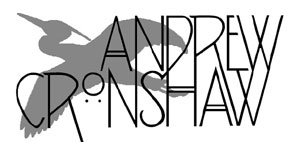
- Andrew Cronshaw website -
- Andrew Cronshaw MySpace -
- Cloud Valley Music website -
- Andrew Cronshaw website -
- Andrew Cronshaw MySpace -
- Back to Reviews Introduction page -
Written in Folk Roots issue 163/164, 1997
MARI BOINE
Eallin
Antilles 533 799-2 (1996)
The magnetic intensity of Mari Boine’s on-stage persona, the culture she
reflects, the sound of her North Sámi language, her joik-rooted exploration of
vocal sounds and the powerful, vibrant minimalism, rock-stripped-bare, of the
band all contribute to her distinctive position in European music.
The present-day Nordic radical remodelling of jazz and
rock and its open relationship with traditional music involves in part a move
away from the vertical polyphonic harmony which has prevailed in Europe for so
long, back towards forms drawing their richness from the texture and shape of
the note, and their energy from rhythmic stresses and balances. It pulls in
ideas from other traditions, many of them fundamentally linear, predominantly
monophonic or duophonic, and there are glimpses in the Boine band’s instrumental
work - only fleetingly discernible and never creating a detour - of Indian,
Arabic and Native North and South American musics.
A live album can be seen as an extra in a
performer’s discography, offering nothing much new except a punchier version of
studio recordings and put out in lieu of a “real” album. But for many, probably
most, musicians live performance is the centre of what they do; that’s true for
Mari Boine, and this album is an important release, and a good place to start if
you’ve never heard her (given that a rare chance to see her live in Britain has
just passed - she was at London’s Queen Elizabeth Hall in November, and the show
went out live on Radio 3).
Her best-known song, Gula Gula (“Hear The
Voices Of The Foremothers”) appears, in the form to which it has evolved since
she first recorded it and over the time in which others including Jan Garbarek
have turned it into a Sámi classic. Some other songs, such as the opening
Mielahisvuohta, (“A State Of Mind Where Your Intellect Is Disconnected” -
there’s no snappy English equivalent of the word), and Vuolgge Mu Mielde
Bassivárrái (“Come With Me To The Sacred Mountain”) were on earlier albums,
but these are live, going-for-it treatments, finely crafted and with the band’s
usual supremely subtle yet driving live sound, not re-creations of the studio
version, and several haven’t appeared on record before.
© 1997
Andrew Cronshaw
You're welcome to quote from reviews on this site, but please credit the writer
and fRoots.
Links:
fRoots - The feature and
review-packed UK-based monthly world roots music magazine in which these reviews
were published, and by whose permission they're reproduced here.
It's not practical to give, and keep up to date,
current contact details and sales sources for all the artists and labels in
these reviews, but try Googling for them, and where possible buy direct from the
artists.
CDRoots.com in the USA, run by
Cliff Furnald, is a reliable and independent online retail source, with reviews,
of many of the CDs in these reviews; it's connected to his excellent online magazine
Rootsworld.com
For more reviews click on the regions below
NORDIC
BALTIC
IBERIA (& islands)
CENTRAL & EASTERN EUROPE, & CAUCASUS
OTHER EUROPEAN AMERICAS OTHER, AND WORLD IN GENERAL
- Back to Reviews Introduction page -